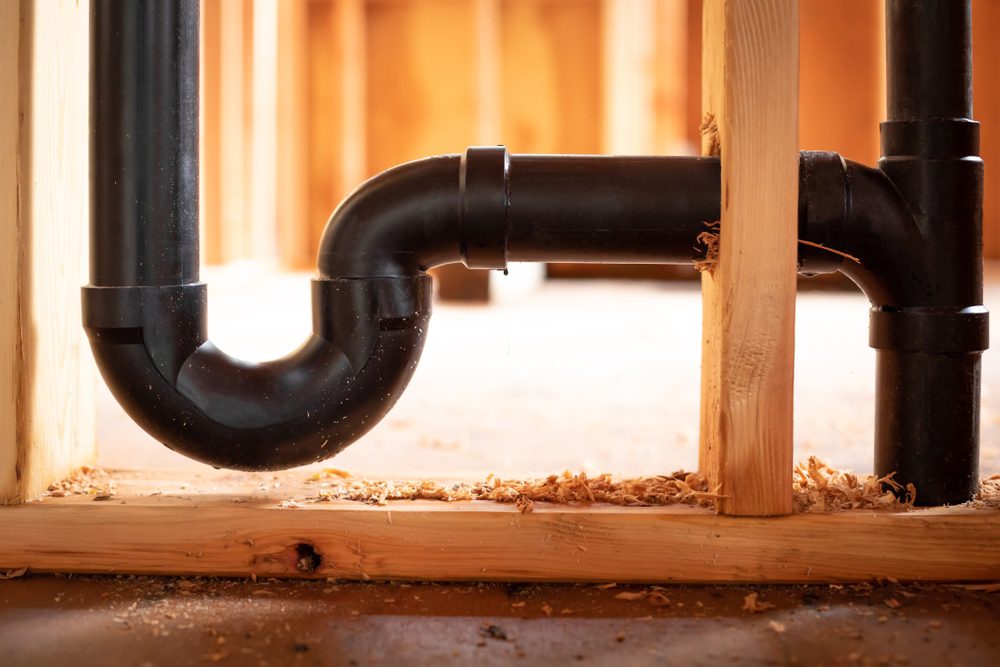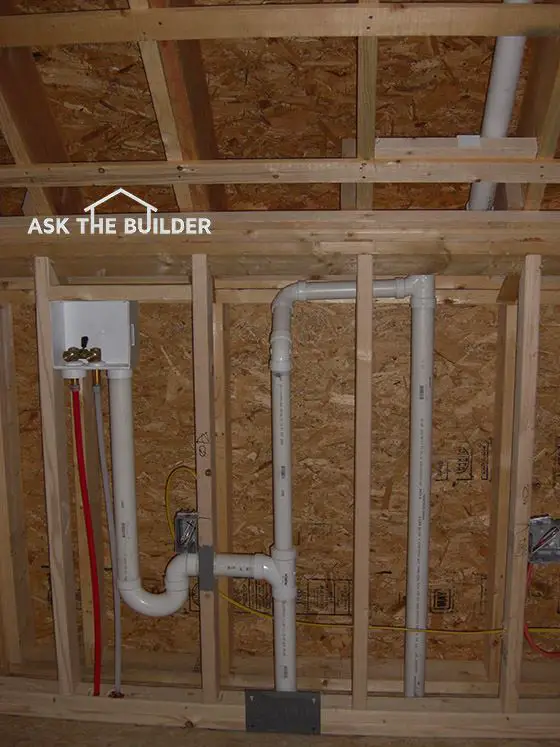The writer is making several good observations related to What Is A Plumbing Vent & How Do They Work? in general in the article further down.

Correct air flow in pipes systems is commonly ignored, yet it is essential for maintaining the functionality and security of your home's plumbing. Ventilation aids regulate atmospheric pressure, protect against the build-up of hazardous gases, and ensure the efficient removal of waste. In this overview, we will check out the relevance of correct plumbing air flow, exactly how it works, and the benefits it brings to your plumbing system.
Recognizing Air Flow in Plumbing
Ventilation in plumbing refers to the network of pipelines that enable air to stream via the drain system. These vents serve multiple functions, including managing atmospheric pressure within the pipelines, protecting against sewage system gases from getting in the home, and helping in the smooth flow of wastewater.
How Ventilation Works in Pipes Equipments
Atmospheric Pressure Law
Correct ventilation maintains well balanced air pressure within the pipes system. When water flows with pipelines, it displaces air. Without appropriate ventilation, this displacement can create adverse pressure, leading to slow drains pipes or siphoning of water from catches, which can trigger undesirable odors to seep right into the home.
Preventing Drain Gas Build-up
One of one of the most vital features of plumbing vents is to avoid sewage system gases, such as methane and hydrogen sulfide, from gathering within the home. These gases can position severe health and wellness dangers and are highly combustible. Vent pipelines permit these gases to get away safely outdoors.
Assisting in Waste Elimination
Air flow assists in the reliable removal of wastewater by avoiding airlocks in the drainage system. When air can stream openly through the vents, it enables water and waste to flow efficiently through the pipelines, minimizing the risk of blockages and backups.
Kinds Of Plumbing Vents
Main Heap Vent
The primary pile air vent, additionally referred to as the air vent stack, is the primary vent in a plumbing system. It prolongs from the major drain line up via the roof covering, permitting gases to leave and fresh air to get in the system.
Branch Vent
Branch vents attach to the major pile air vent and serve individual fixtures, such as sinks, bathrooms, and showers. These vents ensure that each component has adequate ventilation to work correctly.
Air Admission Valve (AAV).
An Air Admission Shutoff (AAV) is a one-way valve that permits air to go into the pipes system without the requirement for a typical vent pipe extending via the roof. AAVs are typically used in improvements or areas where setting up a conventional vent is not practical.
Signs of Poor Ventilation in Pipes.
Slow Draining Fixtures.
If your sinks, bathtubs, or commodes are draining pipes slowly, it could be a sign of bad ventilation. Poor air flow can create a vacuum cleaner result, making it hard for water to drain effectively.
Gurgling Sounds.
Gurgling sounds coming from drains pipes are frequently a result of air being drawn via water catches due to negative pressure in the pipes. This is a clear indicator of inadequate ventilation.
Undesirable Smells.
Drain odors inside your home are a red flag that your plumbing system is not correctly ventilated. This might mean that sewage system gases are not being sufficiently aired vent outside, causing possibly hazardous problems.
Typical Ventilation Errors.
Inadequate Vent Sizing.
Using small vent pipelines can bring about bad air circulation and stress inequalities in the system. It's vital to utilize vents that satisfy the specific demands of your pipes system.
Improper Vent Positioning.
Putting vents as well much from the components they offer can lower their performance. Appropriate positioning makes sure that air can move easily and efficiently through the system.
Disregarding Code Demands.
Building ordinance offer certain standards for pipes air flow. Ignoring these codes can result in a system that fails to function correctly and may result in costly fixings or carcinogen.
Benefits of Proper Air Flow.
Boosted System Efficiency.
Appropriately ventilated plumbing systems operate a lot more successfully, with less blockages, faster draining pipes, and much less pressure on the pipes. This efficiency extends the life expectancy of the plumbing system.
Improved Air High Quality.
By protecting against sewage system gases from entering your home, correct ventilation contributes to far better interior air high quality, making your living setting healthier and extra comfy.
Stopping Water Damages.
Adequate ventilation aids stop water from being siphoned out of traps, which can lead to sewer gases getting in the home and triggering water damages gradually.
Actions to Guarantee Appropriate Air Flow.
Consulting Pipes Codes.
Always seek advice from neighborhood plumbing codes when making or customizing your pipes system. These codes offer the essential guidelines for proper airing vent and guarantee your system meets security criteria.
Regular Inspection and Upkeep.
Routine evaluations can aid determine prospective ventilation problems prior to they end up being significant troubles. Maintenance jobs, such as cleansing air vent pipelines and looking for clogs, are crucial for maintaining the system in good working order.
Specialist Installation.
For new installations or major adjustments, it's important to work with a specialist plumber. They have the knowledge to guarantee the ventilation system is correctly developed and set up according to code.
Final thought.
Appropriate air flow is a crucial component of any kind of pipes system, making sure that it works effectively and safely. By comprehending the relevance of air flow, recognizing the signs of inadequate ventilation, and taking actions to preserve your system, you can protect against costly problems and protect your home's air quality.
Unlocking the Essentials of Drain Vents: Why They’re Crucial to Your Home Plumbing System
Drain vents may be out of sight, but their role in your plumbing’s performance is anything but out of mind. Ensuring smooth drainage and clean air in your home, drain vents are pivotal components that prevent trouble before it starts. Discover their essential functions, how to keep them in check, and what to do if you suspect a problem – all without unnecessary jargon or fluff.
Key Takeaways
Vent pipes are critical to maintaining air pressure balance within a home’s plumbing system, enabling efficient water and waste flow and preventing slow drains, standing water, and vacuum buildup that can hinder performance.
Proper ventilation via vent pipes helps prevent the accumulation of hazardous sewer gases in living spaces by directing them outside, ensuring the health and safety of the home environment.
Innovations like air admittance valves provide alternative venting solutions that can save space and cost while adhering to plumbing codes, especially useful in renovations or constructions where traditional venting is challenging.
The Vital Role of Vent Pipes in Your Home’s Plumbing System
Vent pipes are the unsung heroes of your home’s plumbing system, silently ensuring that every flush and every drain operates with the reliability you take for granted. These vital conduits maintain the essential air pressure balance within your plumbing system, allowing water and waste to flow smoothly and efficiently through drain pipes. Without vent pipes, you’d quickly notice a dire change; imagine the frustration of a sink that refuses to drain or a toilet that won’t flush properly—these are the symptoms of a plumbing system gasping for air.
In the architectural dance of pipes within your home, smaller conduits join forces with larger branch drains, all leading to the main stack—a vertical column that commands the movement of both waste and air. At the summit of this stack sits the stack vent, the overseer of ventilation, which bravely extends through your roof to keep the entire system in harmonious balance.
Understanding Air Pressure in Drainage Systems
Have you ever wondered why water in your sink drains down rather than up? The answer lies in the delicate balance of air pressure within your home’s drainage system. Without proper air pressure, water and waste could be left stranded in your pipes, leading to slow or even stagnant water flow—a homeowner’s nightmare. This is where your plumbing vents step in, drawing air into the system to prevent a vacuum that could disrupt the seamless transit of waste from your home to the sewer system.
Consider your plumbing air vent as a silent guardian that ensures your drains keep flowing smoothly. It’s the unsung hero that prevents slow drains, standing water, and the desperate reach for the drain cleaner. By allowing air to enter the pipes, your plumbing vent plays a pivotal role in maintaining the symphony of water flow that is so crucial to your daily life.
How Vent Pipes Keep Sewer Gases at Bay
Vent pipes perform the critical task of directing sewer gases away from your living spaces, ensuring you breathe easy within the sanctuary of your home. These gases, by-products of your household waste, are anything but pleasant and could pose health risks if allowed to accumulate indoors. Thankfully, your plumbing vent pipes serve as escape routes, channeling these unwanted guests up and out through your roof.
Yet, the venting system’s duty extends beyond mere expulsion of odors; it’s a bulwark against the drying out of your P-trap—the U-shaped pipe under your sink—which if left unchecked, can become a conduit for sewer gases to seep into your home. When vents are clogged, this protective water barrier can evaporate, turning your home into a den of unpleasant odors and potential hazards.
Decoding the Types of Plumbing Vents
Vent pipes come in various forms, each with its unique function and place in your home’s plumbing system. Vent stacks, also known as direct vents, stand tall and proud through your roof, playing a crucial role in alleviating pressures within the system for those larger branch intervals—think of them as the main arteries of your plumbing’s venting network.
On the other hand, the versatility of loop vents and common vents shines in more specific scenarios, offering solutions for complex fixture layouts where a standard vent stack might not suffice. Dive a bit deeper, and you’ll discover auxiliary vents, which rise from near the fixture’s drain line, crossing over to join forces with the main vent stack, ensuring even the most isolated fixtures can breathe freely.
With multiple options available for integrating vents into the stack—including sanitary crosses and revent pipes—plumbers have a veritable toolbox of solutions to ensure every fixture is properly vented, conforming to the needs of your home’s unique plumbing blueprint.
The Straightforward Stack Vent
The stack vent, often referred to as the true vent of your plumbing system, is the epitome of simplicity and effectiveness. Rising vertically from the drain lines, it provides an uninterrupted air passageway to the open sky, ensuring that fresh air can freely enter the system to balance pressure and facilitate drainage. It’s the stalwart pillar that doesn’t mingle with the messy business of transporting water but focuses solely on the vital task of ventilation. To better understand the layout and function of the stack vent, a plumbing vent diagram can be a helpful resource.
Installed within the skeleton of your house, the stack vent makes its exit through the roof without carrying a drop of water along its journey. This vertical pipe reaches beyond the highest horizontal drain connected to the stack, standing guard to ensure that air flow is never compromised, even as it scales the heights of your home.

Hopefully you enjoyed our piece on What Is a Plumbing Vent and Why Is It Important. Thanks a lot for taking the time to browse our piece. Please pause to share this blog entry if you enjoyed reading it. Thanks so much for your time invested reading it.
Instant Quote